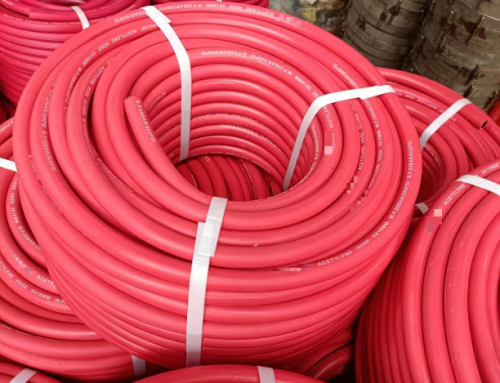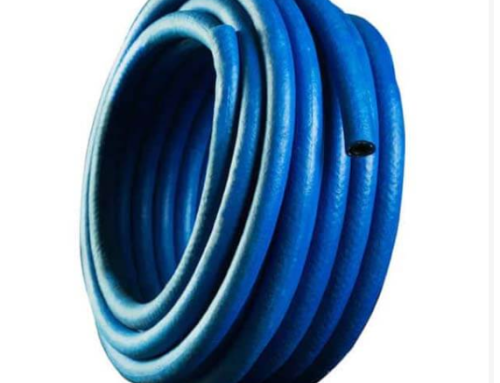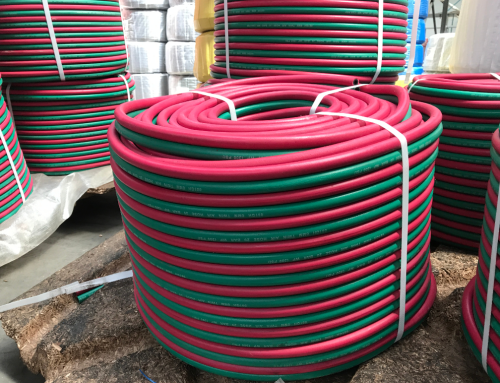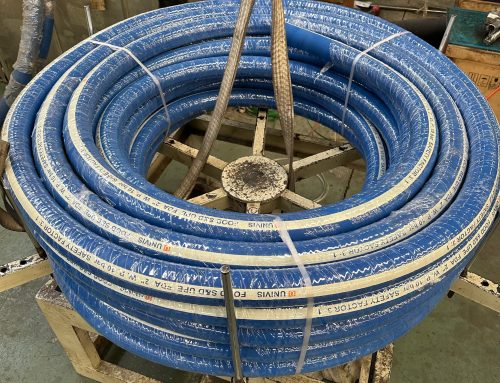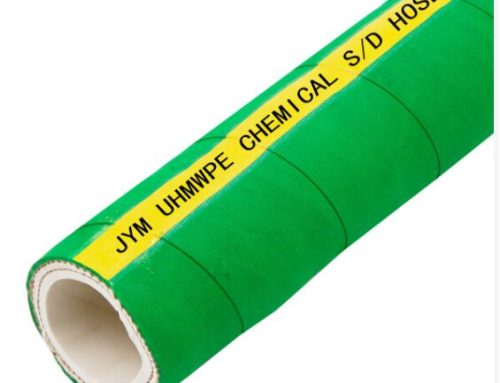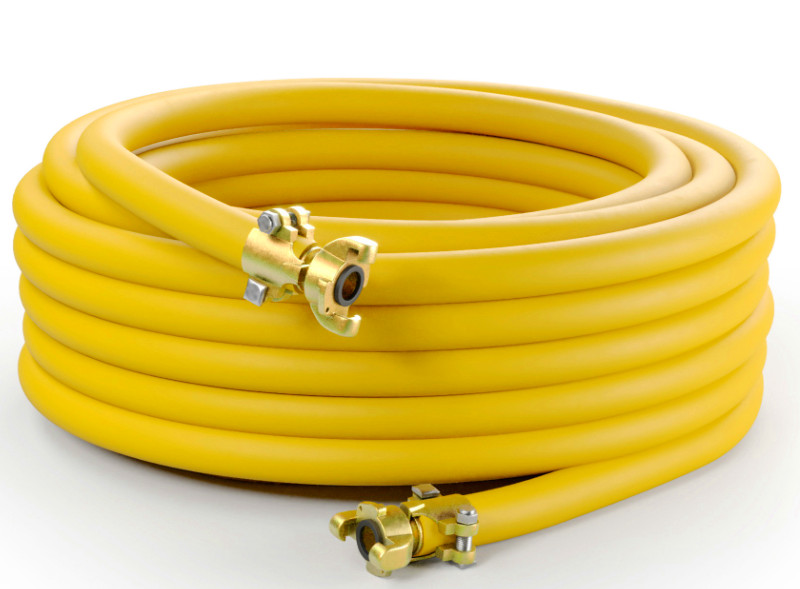
A compressed air hose is an essential tool in various industries and applications where compressed air is required. It is a flexible tube that connects an air compressor to various pneumatic tools and equipment, allowing for the efficient transfer of compressed air. This article will discuss the different types of compressed air hoses, their lengths, diameters, fittings, connectors, working pressure, assembly, applications, and tips for using them effectively.
TYPES
When it comes to choosing the right compressed air hose, understanding the different types available is crucial. Each type has its own unique characteristics and applications, making it essential to select the one that best suits your specific needs.
- Rubber Compressor Hoses
These hoses are made of durable rubber material, which makes them resistant to abrasion and weather conditions. They have a high tensile strength and can withstand high-pressure environments. Rubber compressor hoses are commonly used in industrial settings where heavy-duty applications are required.
- Hybrid Hoses
Hybrid hoses are a combination of rubber and PVC materials. They offer the flexibility of PVC hoses with the durability of rubber hoses. These hoses are lightweight, easy to handle, and have good resistance to kinks and abrasion. Hybrid hoses are suitable for various applications, including automotive and home use.
- PVC Air Hoses
One of the most common types of compressed air hoses is the PVC (Polyvinyl Chloride) hose. PVC air hoses are lightweight and flexible, making them easy to maneuver. They have good resistance to abrasion and are suitable for applications that require low to medium pressure. PVC hoses are commonly used in workshops, garages, and construction sites.
- Polyurethane Hoses
Polyurethane hoses are highly flexible and have excellent resistance to kinks and abrasion. They can withstand harsh weather conditions and are suitable for outdoor applications. Polyurethane hoses are commonly used in industries such as automotive, manufacturing, and construction.
- Nylon Hoses
Nylon hoses are lightweight, flexible, and have good resistance to chemicals and oils. They are commonly used in industries such as automotive, food processing, and pharmaceuticals. Nylon hoses are also suitable for high-pressure applications.
HOSE LENGTH
The length of a compressed air hose can vary depending on the specific application. Common hose lengths range from 25 feet to 100 feet, but custom lengths can also be made. It is important to choose the appropriate hose length for your needs to ensure efficient operation and minimize pressure drop.
The length of a compressed air hose is a crucial factor to consider when it comes to ensuring efficient and safe operations. The right hose length can greatly impact the productivity and convenience of various applications, from industrial settings to DIY projects.
When selecting the appropriate hose length, it is important to take into account the specific requirements of your task. Longer hoses provide greater flexibility and reach, allowing you to move around freely without having to constantly reposition your air compressor. This is particularly advantageous in large workspaces or when working on projects that require mobility.
On the other hand, shorter hoses are often preferred for more compact work areas or tasks that demand precision control. They minimize pressure drop and reduce the risk of tangling or tripping hazards. Additionally, shorter hoses are generally lighter and easier to handle, making them ideal for applications that require frequent movement or transportation.
It is also worth considering the practical limitations imposed by your air compressor’s capabilities. Ensure that the selected hose length aligns with the maximum pressure and flow rate supported by your equipment. This will help maintain optimal performance while preventing potential damage caused by excessive strain on both the compressor and hose.
By carefully evaluating your specific needs and taking into account factors such as workspace size, mobility requirements, and equipment capabilities, you can determine the ideal hose length for your compressed air applications. Investing in an appropriate hose length will not only enhance efficiency but also promote safety and convenience in your operations.
HOSE DIAMETER
The diameter of a compressed air hose determines its airflow capacity. Common hose diameters range from 1/4 inch to 1 inch. Smaller diameter hoses are suitable for low-pressure applications, while larger diameter hoses are required for high-pressure applications. It is important to choose the correct hose diameter to ensure proper airflow and avoid pressure loss.
Choosing the right diameter for a compressed air hose is essential for ensuring optimal performance and efficiency. The diameter of the hose directly impacts the flow rate, pressure drop, and overall effectiveness of the compressed air system.
When selecting a hose diameter, it is crucial to consider factors such as the required airflow, operating pressure, and length of the hose. A larger diameter will allow for greater airflow and reduced pressure drop over longer distances. On the other hand, a smaller diameter may be more suitable for shorter distances or applications with lower airflow requirements.
By carefully evaluating your specific needs and consulting industry guidelines, you can determine the ideal hose diameter for your compressed air system. This will help maximize productivity, minimize energy consumption, and ensure safe operation.
Remember that choosing an appropriate hose diameter is just one aspect of optimizing your compressed air system. Regular maintenance, proper installation techniques, and quality components are equally important in achieving efficient and reliable performance.
In conclusion, selecting the correct hose diameter is crucial in maximizing the efficiency of your compressed air system. By considering factors such as airflow requirements and operating pressure, you can make an informed decision that will enhance productivity while minimizing energy consumption.
FITTINGS & CONNECTORS
Compressed air hoses are typically equipped with fittings and connectors that allow for easy connection to an air compressor and pneumatic tools. Common fittings include quick-connect couplers, barbed fittings, and threaded connectors. It is important to ensure that the fittings and connectors are compatible with your air compressor and tools to ensure a secure and leak-free connection.
Fittings and connectors play a vital role in joining different sections of compressed air hoses together, creating a secure and leak-free connection. They come in various shapes, sizes, and materials to accommodate different applications and requirements.
One of the key benefits of using high-quality fittings and connectors is their ability to withstand high pressure levels without compromising on performance. They are designed to handle the demands of compressed air systems, ensuring a reliable flow of air throughout your setup.
Moreover, these fittings and connectors are engineered with precision to provide a tight seal that prevents any air leakage. This not only helps maintain system efficiency but also reduces energy wastage, saving you money in the long run.
WORKING PRESSURE
The working pressure of a compressed air hose refers to the maximum pressure that the hose can withstand without bursting. It is important to choose a hose with a working pressure rating that exceeds the maximum pressure of your air compressor. This will ensure safe and reliable operation.
When selecting a compressed air hose, it is essential to consider the specific application requirements and operating conditions. Different industries may have varying demands in terms of pressure levels, temperature range, and environmental factors. Therefore, it is crucial to choose a hose that is designed to handle the specific working pressure required for your operations.
By using hoses with appropriate working pressures, you can ensure optimal performance while avoiding potential hazards such as bursting or leakage. It is important to note that exceeding the recommended working pressure can compromise not only the integrity of the hose but also pose risks to personnel safety.
ASSEMBLY
Compressed air hoses are often sold as pre-assembled units, but they can also be custom assembled. When assembling a hose, it is important to properly secure the fittings and connectors to prevent leaks. It is also recommended to use hose clamps or cable ties to secure the hose to prevent it from kinking or tangling.
APPLICATION
Compressed air hoses are used in a wide range of applications, including automotive repair, construction, manufacturing, and home improvement. They are commonly used with pneumatic tools such as air drills, impact wrenches, paint sprayers, and air compressors. The type of hose and its specifications should be chosen based on the specific application requirements.
RECOIL HOSE / STANDARD HOSE
Recoil hoses, also known as self-coiling hoses, are designed to automatically retract to their original shape after use. They are lightweight, compact, and easy to store, making them ideal for applications where space is limited. Standard hoses, on the other hand, do not have the recoil feature and are typically longer and more durable.
REPLACING YOUR AIR HOSE
Over time, air hoses can become worn out, develop leaks, or lose their flexibility. It is important to regularly inspect your air hose for any signs of damage and replace it if necessary. When replacing your air hose, ensure that the new hose meets the required specifications and is compatible with your air compressor and tools.
HOW TO CHOOSE AIR COMPRESSOR HOSE
When choosing an air compressor hose, consider the following factors:
- Application requirements: Determine the specific application requirements, including the type of tools and equipment that will be used.
- Working pressure: Determine the maximum pressure that your air compressor can deliver and choose a hose with a working pressure rating that exceeds this value.
- Hose length: Consider the distance between your air compressor and the tools or equipment that will be connected.
- Hose diameter: Determine the airflow requirements of your tools and equipment and choose a hose with an appropriate diameter to ensure proper airflow.
- Material: Consider the environment in which the hose will be used and choose a material that offers the necessary durability and resistance to abrasion, weather conditions, and chemicals.
SOME TIPS FOR USING AIR COMPRESSOR HOSES
- Inspect the hose regularly for any signs of damage, such as cuts, abrasions, or leaks. Replace the hose if any damage is found.
- Avoid dragging or pulling the hose across sharp edges or rough surfaces to prevent abrasion and damage.
- Properly secure the fittings and connectors to prevent leaks. Use hose clamps or cable ties to secure the hose and prevent kinks or tangling.
- Store the hose properly when not in use. Avoid exposing it to direct sunlight or extreme temperatures, as this can degrade the hose material.
- When using pneumatic tools, ensure that the hose is not stretched or twisted, as this can reduce airflow and cause pressure loss.
- Use the appropriate fittings and connectors for your air compressor and tools to ensure a secure and leak-free connection.
In conclusion, a compressed air hose is a vital tool in industries and applications that require the use of compressed air. Choosing the right type of hose, considering factors such as length, diameter, fittings, working pressure, and application requirements, is crucial for efficient and safe operation. Regular inspection, proper storage, and adherence to usage tips will help ensure the longevity and effectiveness of your air compressor hose.

